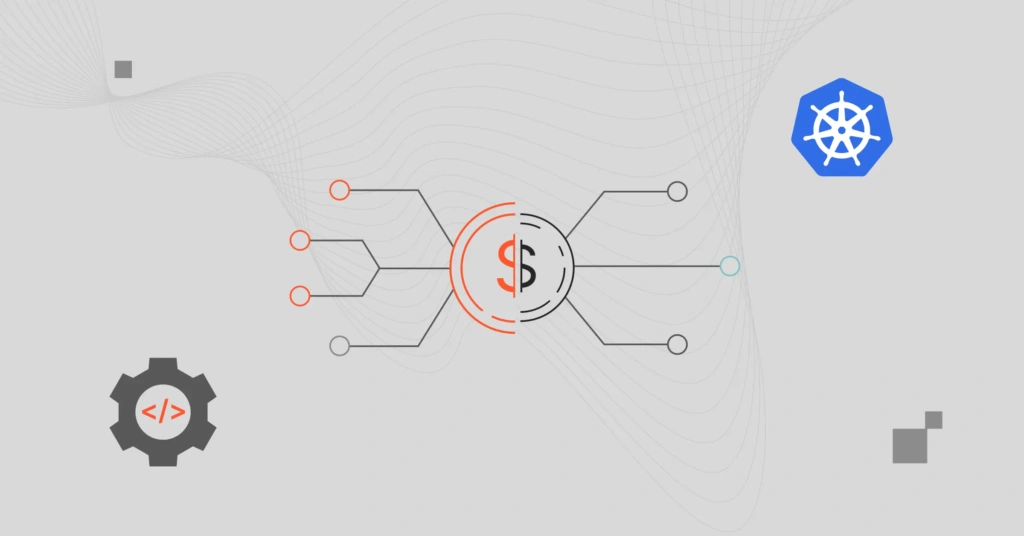To optimize costs, businesses must continuously assess the cost-effectiveness of their IT infrastructure.
This article explores the financial implications of transitioning from traditional cloud IT infrastructure, characterized by elements like EC2, RDS, and non-containerized environments, to Kubernetes, a modern container-orchestration system.
Traditional IT infrastructures have long been the backbone of many organizations, offering a certain level of predictability in cost and performance.
However, the rise of Kubernetes has introduced a new paradigm in managing cloud resources, promising enhanced scalability and efficiency. While beneficial in many aspects, this shift can lead to increased complexity and overhead costs.
We will explore these cost dynamics, providing a comprehensive comparison to help organizations make informed decisions about their cloud infrastructure strategy.
Understanding Traditional Cloud IT Infrastructure
Traditional IT infrastructure is primarily built on components like virtual machines, dedicated servers, and managed databases.
Services such as Amazon EC2 and RDS typify this model, offering a stable and predictable environment for running applications. These components are characterized by their clear-cut resource allocation, allowing for precise capacity planning.
The traditional cloud infrastructure cost model is often straightforward but can vary based on usage patterns. Key aspects include:
- Fixed Pricing Models – The traditional model focuses on a pay-as-you-go system, offering organizations stability when it comes to financial planning and budgeting.
- Tiered Pricing Models – If willing to make a long-term commitment, organizations can opt to use Reserved Instances or Spot Instances for workloads that can handle the drop in reliability.
- Scalability – The ability to have traditional infrastructure scale according to load is an art, and if misconfigured, which happens often, leads to elevated costs and underutilized resources.
What Is Kubernetes?
Now that we understand how our bill is comprised within traditional infrastructure, let’s talk about the differences that arise when you move into a containerized environment.
Kubernetes is an open-source container-orchestration platform designed for automating deployments, scaling, and operation of application containers across a cluster of hosts. It provides a framework to run distributed systems resiliently, managing scaling and failover for applications, providing deployment patterns, and more.
Essentially, Kubernetes represents a shift from hardware-centric infrastructure to a container-centric model, where applications are packaged with all their dependencies, ensuring consistency across various computing environments.
Benefits Over Traditional Cloud Infrastructure
Kubernetes offers several advantages over traditional cloud IT infrastructure, the key ones being:
- Improved Scalability – Kubernetes excels in its ability to quickly and efficiently scale applications up or down based on demand without the need for significant manual intervention.
- Flexibility and Efficiency – Using containers allows greater flexibility in deploying and managing applications. This flexibility can improve resource utilization and efficiency, as containers are lightweight and quickly moved or replicated.
- Resource Utilization – Kubernetes optimizes the use of underlying resources, reducing costs by minimizing waste. It dynamically allocates resources to containers based on real-time needs, a marked improvement over the static allocation in traditional setups.
The Cost Implications of Kubernetes
It seems like Kubernetes is a better fit for those looking to optimize costs. Is that really the case?
Let’s explore the cost of setting up a Kubernetes environment.
Initial Setup Costs
The transition to Kubernetes often involves initial setup costs that can be substantial.
This includes expenses related to developing the necessary technology, configuring the Kubernetes environment, and potential migration costs from existing systems — not to mention the inevitable growing pains organizations undergo when learning new technology.
Unlike traditional setups, where infrastructure is more static, Kubernetes requires a dynamic and flexible environment, which may entail investment in new tools and technologies.
Ongoing Operation Costs
Kubernetes, while efficient in resource utilization, brings with it ongoing operational costs. These include the costs of managing the cluster, such as monitoring, security, and regular updates.
Additionally, there’s a need for specialized skills and training for engineers to effectively manage a Kubernetes environment, which could lead to higher staffing costs or the need for additional training.
Complexity and Overhead
The shift into Kubernetes can also introduce a new level of complexity to infrastructure management. This complexity impacts the learning curve for staff and can lead to increased overhead in system maintenance and troubleshooting.
The dynamic nature of container orchestration demands continuous monitoring and optimization to ensure cost-effectiveness, which can be a significant shift from the more predictable maintenance routines of traditional infrastructures.
Comparing Costs: Traditional Cloud Infrastructure Vs. Kubernetes
Direct Cost Comparison
When comparing the direct costs, traditional IT infrastructure often involves upfront investments in hardware and software licenses.
In contrast, Kubernetes, being an open-source platform, can reduce software costs but may require more investment in cloud resources and technology to support a containerized environment.
The hardware costs in Kubernetes are typically variable and tied to usage, as opposed to the fixed costs in traditional setups.
Indirect Cost Comparison
Indirect costs, such as staff training, system complexity, and the potential for downtime, also vary between the two models. Kubernetes demands a higher level of expertise and continuous management, which could lead to increased training and staffing expenses.
Additionally, the complexity of managing a Kubernetes environment could result in higher indirect costs related to system administration and troubleshooting compared to the more straightforward maintenance of traditional infrastructure.
How CloudZero Brings It All Together
Clearly, Kubernetes is not without pitfalls. Despite being a technology that offers significant advancements over traditional infrastructure, it’s still easy to allow misconfigurations to add significant costs to our monthly bill.
However, what if a platform provided a single pane of glass into all of our cloud spending, regardless of the technology being used?
Thankfully, CloudZero has quickly emerged as the leader within the cost optimization space. The platform is feature-rich, providing organizations with the ability to do many things, including:
- Enhanced Visibility – While cloud platforms may have their own means of providing visibility into their platform’s spend, CloudZero can consolidate all of your cloud spending into one view. This is integral for multi-cloud organizations and allows any company to see value immediately, regardless of tech stack.
- Cost Optimization – CloudZero employs AI and human-driven analysis to identify cloud savings opportunities. This proactive approach assists businesses in understanding the financial impact of their Kubernetes usage and optimizing resource allocation.
- Budgeting and Forecasting – Whether you’re using traditional infrastructure or leveraging Kubernetes for your workloads, the ability to set budgets and accurately estimate your future costs is imperative for business success. CloudZero allows you to easily control the amount allocated to individual cloud services and set automated alarms when thresholds are crossed.
Whether it’s Symphony Talent knocking their annual AWS bill down 48%, Beamable using the platform to develop a custom solution providing insights they couldn’t get anywhere else, or Validity reinvesting into the business after spending 90% less time on cost management tasks, customers all over the world are reaping the benefits that CloudZero is providing.
Both Kubernetes and traditional infrastructure have their pitfalls, but both still have their place in today’s modern tech landscape. The challenge is ensuring you have a clear view of the costs being incurred.
Let CloudZero guide you to an efficient and optimized environment. Reach out today to  !
!








